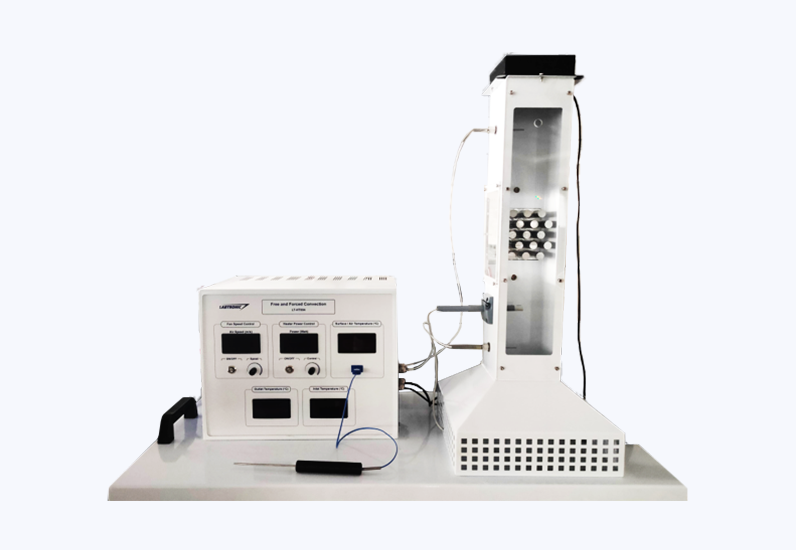

The Labtronic Free and Forced Convection unit is an advanced experimental setup designed to study the principles of heat transfer through convection, both natural and forced. The unit features a transparent vertical air duct that guides the airflow over a heated surface. Ambient air enters the duct from the bottom and exits as heated air from the top, allowing for clear observation of the convection process.
The air duct is equipped with multiple measuring points, where thermocouples are used to record temperatures at various locations within the duct. Additionally, a fan equipped with a flow sensor introduces air into the duct and measures its volumetric flow rate. The system includes two additional temperature sensors to monitor the inlet and outlet temperatures of the airflow.
Different heaters and heated surfaces, such as flat plates, pipe bundles, or fins, can be easily mounted inside the duct using simple fasteners. The heaters are adjustable, allowing users to vary the heat output as needed. The control and display unit provides full control over the power supply, fan speed, and heater power. It also displays key parameters such as the electrical power supplied to the heaters, the air’s volumetric flow rate, and the inlet and outlet temperatures.
The system is supported by specialized software for recording and processing all measured data, ensuring high accuracy and reducing human error. All necessary accessories are included, making the experiment easy to operate and manage.